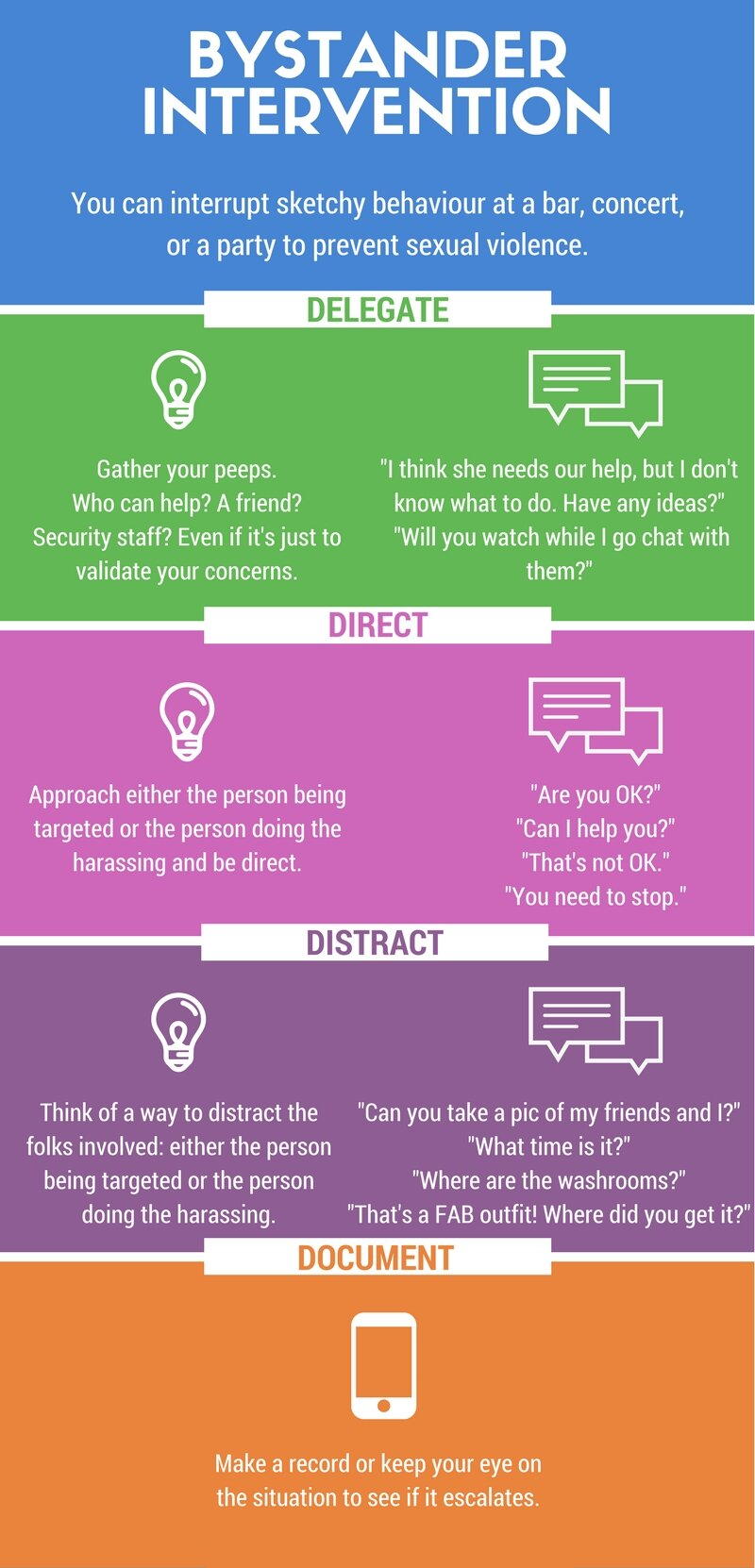Be an active bystander. Step up and speak out to stop sexual harassment and violence.
When should you intervene?
The first step is to notice when a situation could escalate. It could be an interaction that looks relatively minor but has the potential to turn into harassment or physical violence.
Bystanders are encouraged to intervene before behaviours turn violent and dangerous. This could be the case when somebody is:
- behaving in a way that feels inappropriate, coercive or harassing;
- making offensive jokes or comments;
- displaying possessiveness, extreme jealousy, and/or aggression;
- saying or doing something that just doesn’t feel right.
A situation also requires action if it is dangerous, appears to be escalating or if the behaviour doesn’t seem like it will to stop on its own.
How can I safely intervene?
If possible, check with the person/s targeted to make sure they are comfortable with you taking action. Asking ‘can I help?’ or ‘what can I do?’ might be a first step in signaling that you are willing to support them.
Then remember the 4D strategy in your role as an active bystander: Direct, Distract & Delegate, and Document.
Direct
Direct intervention happens when a bystander confronts a situation him- or herself. You might see a situation that looks like it may escalate. Say things to the aggressor, like:
- “That’s not funny!”
- “What you said [or did] isn’t cool.”
- “That type of language [or behavior] isn’t OK.”
Stand next to someone so they know they are not alone; look disapprovingly at a person who is harassing someone else; when the time is right, tell the person who was mistreated, that it wasn’t okay and you’re sorry it happened.
You may feel you need to step in and pull the person targeted aside and walk them to safety. This is the most immediate action in a situation, but: Halifax Regional Police say that situations involving alcohol and other substances can escalate quickly and unpredictably, and getting physically involved can be dangerous for you. We all remember what happened when community leader Raymond Taavel got between an assailant and victim on April 17, 2012.
If you're in a bar, go and get the bar security right away. If you're out on the street, glance around; if there are any security people visible, call for help, and dial 911.
Distract
You can try to cause a distraction that will diffuse the situation and give a moment for things to calm down. For example “accidentally” spilling a drink or asking to borrow the cell phone from the person who is in the threatening situation. Sometimes that one break in a situation is all it takes to help someone.
Delegate
Enlist the help of others. Be specific in asking other bystanders to get help, call the police or confront the situation together. Intervening does not mean that you have to do it alone.
Document
Start videoing what's going on. Observe the situation and try to make note of anything that might later help police in an investigation. What happened? Who was doing or saying what? Take note of what people look like, what they wear and what stands out to you.
Useful phone numbers
- Provincial Mental Health Crisis Line, 1-888-429-8167, 24/7.
- Sexual Assault and Harassment Phone Line, Dal Student Union, 1 902 425 1066 noon - 4pm Monday & Wednesdays
- Halifax Regional Police Victim Services, Provincial, 1 902 490 5300 8:30am - 4:30pm Monday to Friday

 Wayves Staff • 2024-07
Wayves Staff • 2024-07